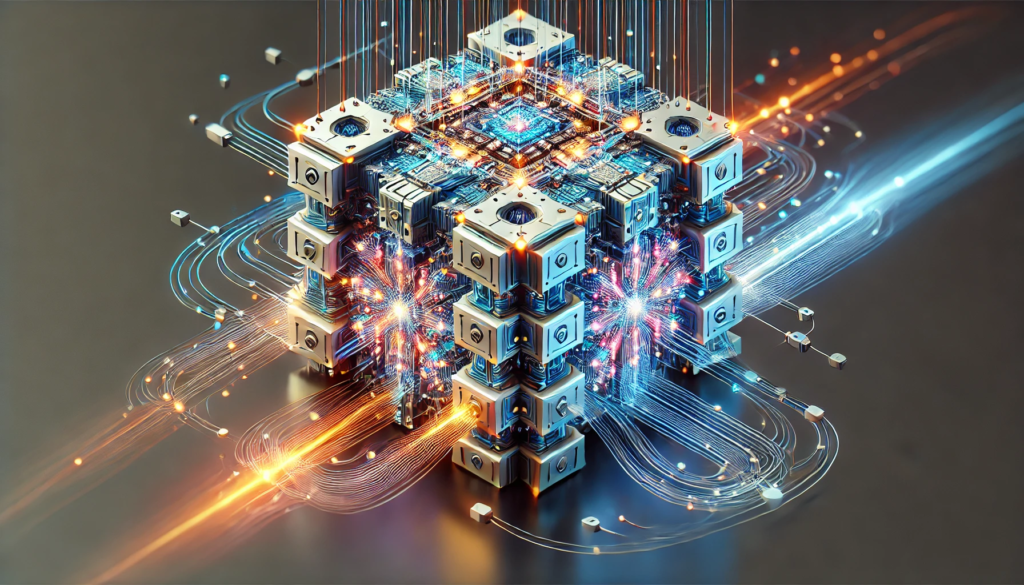The Transformer architecture is a type of neural network that has advanced natural language processing (NLP) tasks while recently being applied to various other domains including time series prediction. Here’s a detailed look at its key components and how they function:

Key Components of Transformer Architecture:
- Input Embeddings:
- Purpose: Convert input tokens (words, in NLP; time steps or features in time series) into vectors of a fixed size.
- Implementation: A linear layer where each input element gets mapped to a vector in a high-dimensional space.
- Positional Encoding:
- Purpose: Transformers do not have inherent knowledge of sequence order, so positional encodings are added to the input embeddings to give the model a sense of word/token position in the sequence.
- Implementation: Typically, sine and cosine functions of different frequencies are used to create these encodings, ensuring that each position in the sequence is uniquely represented.
- Encoder-Decoder Structure:
- Encoder: Processes the input sequence to produce a sequence of continuous representations.
- Decoder: Uses the encoder’s output to generate the output sequence, attending to both the encoder’s output and its own outputs.
- Self-Attention Mechanism:
- Purpose: Allows the model to weigh the importance of different parts of the sequence for each word/token. This is particularly useful for capturing dependencies regardless of their distance in the sequence.
- Implementation:
- Query, Key, Value: For each position, three vectors are computed (Q, K, V) through learned linear projections.
- Attention Scores: Computed by taking the dot product of query with all keys, divided by the square root of the dimension of the key vectors (for stability), then applying softmax to get attention weights.
- Context Vector: A weighted sum of the values based on the attention scores.
- Multi-Head Attention: Instead of performing a single attention function with query, key, and value, multiple attention heads are used to jointly attend to information from different representation subspaces at different positions.
- Feed-Forward Networks:
- Purpose: Apply non-linear transformations to each position independently, allowing for more complex feature interactions.
- Implementation: Typically consists of two linear layers with a ReLU activation in between.
- Layer Normalization:
- Purpose: Stabilizes the learning process by normalizing the outputs from previous layers.
- Implementation: Applied before or after the addition in residual connections.
- Residual Connections:
- Purpose: Help with gradient flow during training, counteracting the vanishing gradient problem in deep networks.
- Implementation: Add the input of each sub-layer to its output.
How Transformers Work for Financial Forecasting:
- Sequential Data Handling: Financial data like price series is inherently sequential. Transformers process the whole sequence at once (unlike RNNs which process sequentially), which is advantageous for parallel computation.
- Long-Term Dependencies: Self-attention allows the model to capture long-range dependencies in the data, which is critical in financial markets where past events can have delayed effects.
- Scalability: Transformers can easily scale to very long sequences by handling multiple positions in parallel, which is beneficial for dealing with extensive historical data.
- Feature Interaction: The multi-head attention mechanism can focus on different aspects of the data (e.g., short-term volatility vs. long-term trends), providing a nuanced understanding of market dynamics.
- Time Series Encoding: Instead of word embeddings, you would use price, volume, or other financial metrics as inputs, with positional encodings adjusted to represent time intervals or steps.
Practical Considerations:
- Training Data: Requires a significant amount of high-quality, labeled data for effective training.
- Computational Resources: Transformers are resource-intensive due to the attention mechanism’s complexity, particularly for long sequences.
- Overfitting: Risk of overfitting on historical data, which might not predict future movements well.
- Interpretability: While powerful, the attention mechanism can be hard to interpret, reducing model transparency.
In summary, the Transformer architecture is particularly well-suited for tasks where understanding the relationship between elements of a sequence is crucial, offering significant advantages over traditional recurrent architectures in terms of performance, parallelization, and handling long-range dependencies.
https://github.com/GATERAGE/neuralnet
https://github.com/GATERAGE/neuralnet/blob/main/PRODUCTION_TRANSFORMER.md



